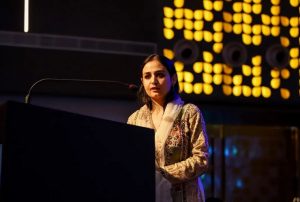London – The protests that have rocked Sri Lanka in recent weeks have not spared the press: Last Saturday (9) eight journalists from the Newsfirst publisher were attacked by police and four were attacked alive while filming a demonstration outside the Prime Minister’s home, Ranil Wickremesinghe.
Some were seriously injured, and police brutality shocked the country, sparking a backlash from international journalists.
inside you Press Freedom Index This year, Reporters Without Borders (RSF) said police violence against journalists has increased in Sri Lanka under the rule of President Gotabaya Rajapaksa, a former military man. The country ranks 146th among 180 countries that make up the index.
Police commander orders attack on Sri Lankan protests
Anti-government protests escalated on Saturday. President Gotabaya Rajapaksa’s home was raided, forcing him and his aides to flee.
Protesters moved to other parts of the city as well, reaching the upscale neighborhood where the prime minister’s home is located.
During the live broadcast of this protest, a news crew from Newsfirst, one of the country’s largest media outlets, was attacked by the police, according to the broadcaster.
Journalists Sarasi Pieris, Judin Sinthujan, Janitha Mendis and cameraman Warun Sampath prepared to broadcast the nightly news that was transmitted to the security forces, according to Newsfirst.
“But what happened next was a brutal and inhumane attack by the police and Special Task Force on unarmed Newsfirst journalists,” the broadcaster said.
In the first seconds of the live broadcast, police officers scream and push the professionals away, and the broadcast signal drops rapidly. Anchor repeats the footage and describes the police brutality suffered by his colleagues:
Recorded footage shows Police Special Task Force Commander Romesh Liyanage ordering his troops to attack journalists.
Another Newsfirst team, along with journalists Kalimuttu Chandran, Imesh Sutherland, Chanuka Weerakoon and Banidu Lokuruge, attempted to rescue their colleagues, but were attacked by police with tear gas and batons.
In one of the videos, the exact moment a group of policemen fell to the ground and bumped into one of the professionals holding a video camera was recorded.
The broadcaster reported that 23-year-old journalist Sarasi Pieris suffered serious head and back injuries.
Waruna Sampath, Judin Sinthujan and Janitha Mendis were also seriously injured. All were referred to Nacional Colombo Hospital for treatment.
A police spokesperson on the violence against journalists said the commander who ordered the attacks would be subject to disciplinary action. The Colombo police inspector general also ordered an immediate investigation into the attacks.
“Media freedom is very important to democracy in Sri Lanka. “The prime minister urges the security forces and protesters to act with moderation to avoid any violence and ensure the safety of the people,” he said.
The International Federation of Journalists (IFJ) and its Sri Lankan subsidiaries, the Free Media Movement (FMM) and the Sri Lanka Working Journalists Association (SLWJA), condemned the police’s actions.
“The brutal attacks on journalists and media workers during the protests in Sri Lanka are a clear attempt to undermine freedom of the press and expression.
Journalists must be able to report safely without fear of harassment or violence.
IJF urges the Sri Lankan authorities to end the intimidation of journalists and the media and bring the perpetrators of these attacks to justice immediately.”
Also Read | India bans Pulitzer Prize-winning Reuters photojournalist from traveling abroad
RSF says police violence against media is increasing in Sri Lanka
In its analysis of Sri Lanka, Reporters Without Borders argues that press freedom issues are closely linked to the civil war that raged the island until 2009 and the crimes—still unpunished—against many journalists during the suppression of the Tamil rebellion.
“With a media industry that lacks diversity and is dependent on major political clans, journalism is at risk.”
Before assuming leadership of the country, Gotabaya Rajapaksa was secretary of the Ministry of Defense in his brother Mahinda’s government from 2005 to 2015. This period is described as a “dark decade” by journalists in the country.
“Gotabaya became famous as the head of the ‘white van command’, referring to the vehicles in which journalists were abducted for executions. At least 14 people disappeared in this way,” says RSF.
“Since coming to power in 2019, police crackdown on journalists has resurfaced with alarming concern.”
According to the organization, at least 44 media workers have been killed or disappeared in Sri Lanka over the past two decades.
“Although murders of journalists stopped after 2015, these crimes [anteriores] completely unpunished.”
According to the RSF, Sri Lanka does not formally restrict freedom of expression, but there is no guarantee of any protection for journalists.
The organization criticizes1973 act establishing a Press Council aimed at “regulating” the industry as the President appoints the majority of its members.
“Authorities regularly resort to anti-terrorism legislation to silence journalists, particularly those trying to cover the conditions of the Tamil minority in the north and east of the island,” the analysis says.
As an example of how tensions between the government and the press persist, the RSF called for the country’s justice in March to drop charges against journalist Muruguupillai Kokulathasan, who was released on bail that month after serving more than 470 days in prison.
Kokulathasan, known as Kokul, was detained in November 2020 under the brutal Anti-Terrorism Act (PTA) for allegedly posting pictures of the political organization Tamil Eelam Liberation Tigers on Facebook.
The situation of press freedom in Asia, which is among the countries where journalists are most persecuted and imprisoned, such as Myanmar and China, is critical.
Read more
source: Noticias
[author_name]
